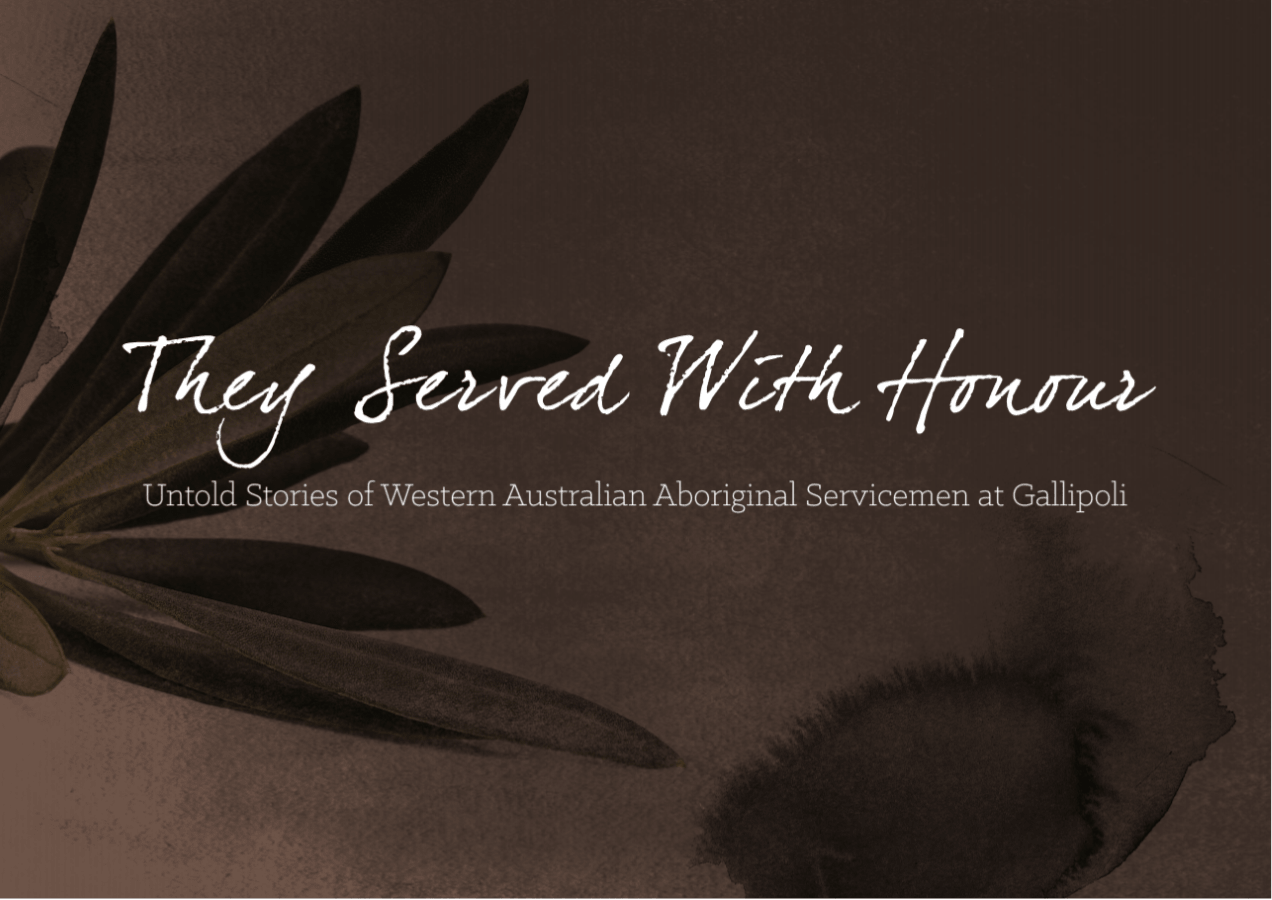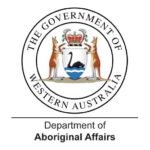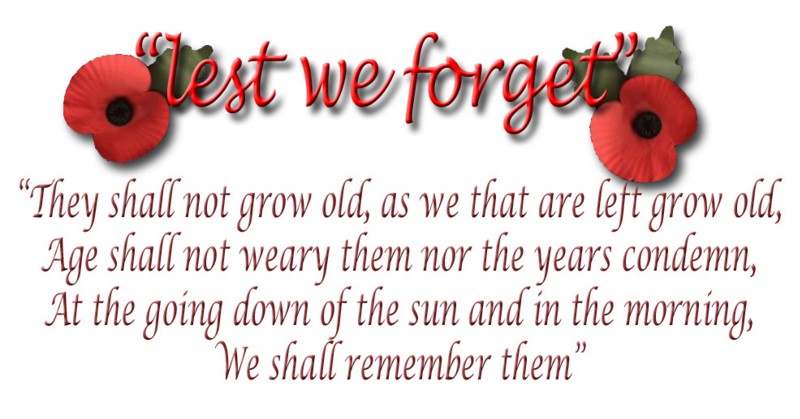Indigenous Soldiers
| FARMER FAMILY |
| WORLD WAR ONE |
| WORLD WAR TWO |
| BOER WAR |
| GALLIPOLI WORLD WAR ONE |
| INDIGENOUS SERVICE WORLD WAR ONE |
| CAN YOU HELP? |
Lost Katanning acknowledges the traditional owners and custodians of this land. We pay our respect to Elders past and present, their descendants, and those who will follow in their footsteps.
Aboriginal people are advised that this publication contains the names and images of deceased people.
The inclusion of words, terms or descriptions from historical records reflects the social attitudes of the period in which they were written.
Please note:
Aboriginal and Torres Strait Islander people should be aware that this website may contain images, voices or names of deceased persons in photographs, film, audio recordings or printed material.
AIATSIS Library and Lost Katanning would like to acknowledge, and pay tribute to, Aboriginal and Torres Strait Islander warriors, men and women past and present, from the Freedom Fighters to those who have served and are serving today in the Australian Defence Force.

Our indigenous soldiers fought alongside their fellow Australians in both World Wars. Many were promoted or won bravery awards. And many never returned home paying the supreme sacrifice for the people and land they loved.
.
KATANNING’S FARMER FAMILY
Aboriginal Australians were excluded from military service (myth) in the First World War, however some managed to enlist despite the legislation. Amongst them were four brothers from Katanning’s Farmer family but only two returned home.
Lewis (19) was the first to enlist in December 1914 in Katanning and was followed by brother Larry (20) in 1915. That same month they were both placed in the 28th Battalion at Blackboy Hill [2]. Both survived the Gallipoli Campaign [2] to serve at the Western Front [2]. Lewis’s only war injury was sustained at Pozieres [2] in August 1916. He was lucky. This battle claimed many lives including that of his brother Larry who died within days of its commencement.
Kenneth (18) and Augustus enlisted in late 1915. Ill health saw Kenneth sent back to Australia in August 1916 but by December he had rejoined, possibly driven by the news of his brother’s death. He was invalided due to a gunshot to the jaw in 1918.

WW1 Military Medal
Augustus served with distinction in France. He rose to the rank of Corporal and was given the Military Medal for ‘bravery in the field’ in May 1918. He was killed in action on 8 August nearly two years after Larry to the day. His mother was not notified of his award until January 1919.
Larry and Augustus Farmer are commemorated at the Villiers-Bretonneux Memorial.
Another brother, Richard, went on to serve during the Second World War with his son Ronald.
WORLD WAR ONE (1914 – 1918)
LEWIS FARMER

Service Number: 421
Rank: Private
Roll title: 28 Infantry Battalion (July 1915)
Conflict / Operation: First World War, 1914-1918
Date of embarkation: 9 June 1915
Place of embarkation: Fremantle
Ship embarked on: HMAT Ascanius A11
Notes: Embarkation date was recorded as 29 June on original record.
On-Line Records:
Australian War Memorial
Discovering ANZACs
Lewis Farmer was born in Katanning, Western Australia in February 1896. He was the fourth son of William Pegg Farmer and Emily Coyne. Lewis was raised and educated in Katanning where he was an active member of the Senior Cadets and the Katanning Football Club.
On 28 December 1914, Lewis enlisted in the Australian Imperial Force (AIF) at Katanning. He joined the 28th Battalion at Blackboy Hill in March the following year, and trained with the 11th Company Australian Garrison Artillery at Arthur’s Head in Fremantle. On 9 June 1915, he embarked at Fremantle on the HMAT Ascanius A11 for Egypt along with his older brother Larry, Randell Mason and Charles Hutchins. Following another period of training, the Battalion journeyed to Gallipoli aboard the transport SS Ivernia on 4 September 1915.
After the evacuation of Gallipoli in December 1915, the 28th Battalion proceeded to the Greek island of Lemnos where they remained until 10 January 1916 when they were transported back to Alexandria.
From “They Served with Honour”
KENNETH FARMER

Service Number: 3373
Rank: Private
Roll title: 5 Pnr Bn [Pioneer Battalion] – 6 to 8 Reinforcements (October-December 1916)
Conflict / Operation: First World War, 1914-1918
Date of embarkation: 23 December 1916
Place of embarkation: Fremantle
Ship embarked on: HMAT Berrima A35
On-Line Records:
Australian War Memorial (1)
Australian War Memorial (2)
Discovering ANZACs
Kenneth Farmer enlisted twice in the Australian Imperial Force in 1915 and again in 1916 prior to being injured in 1918.
LARRY FARMER

Service: Australian Army
Service Number: WX5656
Date of Birth: 29 Sep 1902
Place of Birth: Katanning, WA
Date of Enlistment: 22 Jun 1940
Locality on Enlistment: Katanning, WA
Place of Enlistment: Northam, WA
Next of Kin: Farmer, Ada
Date of Discharge: 2 Nov 1945
Rank: Private
Posting at Discharge: 2/16 Australian Infantry Battalion
WW2 Honours and Gallantry: None for display
Prisoner of War: No
On-Line Records:
Australian War Memorial
Discovering ANZACs
Larry Farmer was an ANZAC in World War I who served in the Gallipoli Campaign.
Larry Farmer, also known as ‘Pincher’, was born in Katanning in March 1894. He was the third of eight sons born to William Pegg Farmer and Emily Coyne. Larry was raised and educated in Katanning where he gained a reputation as a talented footballer, winning a gold medal in the 1911 footy season.
As a teenager Larry served an apprenticeship of three-and-a-half years with Katanning coach-builders Mouritz Brothers, acquiring a wide range of mechanical, upholstering and painting skills. When he enlisted in Australian Imperial Force (AIF) on 13 March 1915 in Bridgetown, some 140 kilometres south west of his birthplace, Larry had been working in the timber industry and described himself as a labourer.
Proceeding to Perth, Larry obtained a letter signed by his father in Katanning agreeing to let his son ‘go on active service’. Following a period of training at Blackboy Hill, Larry joined the 28th Battalion on 16 April 1915. Larry embarked from Fremantle on 9 June aboard the HMAT Ascanius, a11 bound for Egypt. His younger brother Lewis, travelled with him.
On 4 September, Larry, with the 28th Battalion, embarked aboard SS Ivernia from Alexandria and arrived at Gallipoli four days later. Following the Allied evacuation of Gallipoli in December 1915, the 28th Battalion proceeded to the Greek island of Lemnos where they remained until 10 January 1916, when they were transported back to Alexandria on the HT Ansonia.
Following two month’s rest, Larry sailed for Marseille in France with the 28th Battalion, arriving on 16 March. While engaged in the Battle of Pozières, Larry Farmer was killed in action. In September 1916 his parents received the sad intelligence’ that their son had been killed. The following week, a note of thanks from his parents and family was published for the ‘cards, letters and expressions of sympathy received on their sad bereavement at the loss of their son Larry killed in action in France’.
On 23 October 1916, Larry’s mother Emily received a military pension of 40s per fortnight for the loss of her son and a memorial scroll was received in September 1921.
Larry Farmer’s name is on the Villers–Bretonneux Australian National Memorial in France, the National War Memorial, the Western Australian State War Memorial, and the Katanning State School Honour Board alongside his brothers Lewis, Kenneth, and Augustus; who was also killed in action in France. Private Larry Farmer was awarded the 1914-15 Star, the British War Medal 1914-20 and the Victory Medal for his military service.
From Wikimedia
AUGUSTUS (GUS) PEGG FARMER


MILITARY MEDAL CITATION
(Click image to enlarge)
“Corporal Augustus Farmer was a Western Australian indigenous soldier from Katanning. He served in the 16th Battalion of the first AIF (Australian Imperial Force). In May 1918 he became the first Aboriginal soldier to be awarded the Military Medal for his conspicuous bravery under fire.
Three months later Augustus was mortally wounded at Mericourt on the Somme River. Today he lies in a military cemetery in Northern France”
THOMAS FORD

FORD, Thomas Henry
Service number – 4655
Rank – Private
Unit – 31st Australian Infantry Battalion Service
Australian Imperial Force
Conflict/Operation – First World War, 1914-1918
Conflict Eligibility Date – First World War, 1914-1921
Date of Death – 26 September 1917
Place of Death – Belgium
Age at Death – 23
Born – Katanning, Western Australia
Place of Association – Turallin, Queensland, Australia
Cemetery or Memorial Details – Menin Gate Memorial,
Ypres, Flanders, Belgium
War Record – CLICK HERE
Read his Story – CLICK HERE
Thomas Henry FORD was born in Katanning, Western Australia to Thomas Henry Ford and Mary (Alma Eigel) Yeelcan in 1894. He was working as a labourer in Millmerran, Queensland where he resided with this wife Elizabeth (nee Hagan), and his ten months old son, also Thomas Henry, when he enlisted in October 1916.
Ford volunteered to serve with the first AIF at Toowomba and trained at Rifle Range Camp, Enoggera with the 12th Reinforcements for the 31st Infantry Battalion, before embarking for overseas in December 1916. In August 1917, Ford joined the 31st Battalion at Racquinhem, in northern France, and by September 1917 they were engaged in major operations in the vicinity of Polygon Wood, and it was here that Thomas Ford was killed in action.
On the eve of 26-27 September, Ford was hit by a high explosive shell, and was buried where he fell. His comrades placed a simple cross on his grave, but by the end of the war, many of these temporary graves were obliterated. Thomas Ford’s service in the First World War is commemorated at the Ypres (Mennin Gate) Memorial, which stands as a reminder of those who died, who have no known grave. (State Library of Queensland)
.
WORLD WAR TWO (1939 – 1945)
Local Aboriginal men again came to the fore to fight for Australia during World War Two. And, once again, Farmer family members didn’t hesitate to enlist.
RICHARD FARMER

Service: Australian Army
Service Number: WX5656
Date of Birth: 29 Sep 1902
Place of Birth: Katanning, WA
Date of Enlistment: 22 Jun 1940
Locality on Enlistment: Katanning, WA
Place of Enlistment: Northam, WA
Next of Kin: Farmer, Ada
Date of Discharge: 2 Nov 1945
Rank: Private
Posting at Discharge: 2/16 Australian Infantry Battalion
WW2 Honours and Gallantry: None for display
Prisoner of War: No
On-Line Records:
Veterans’ Affairs Website
Australian War Memorial
Richard Farmer was the son of Richard and Ada Mabel (Davis) Farmer. He was born in Katanning on 12 January, 1931 and died in Katanning on 11 October, 1993 aged 62. His occupation was train driver with the WAGR and was stationed at the Katanning Locomotive Depot.
RONALD FARMER
Service: Australian Army
Service Number: WX34814
Date of Birth: 9 Sep 1923
Place of Birth: Wagin, WA
Date of Enlistment: 5 Oct 1942
Locality on Enlistment: Katanning, WA
Place of Enlistment: Fremantle, WA
Next of Kin: Farmer, Mabel
Date of Discharge: 8 Apr 1947
Rank: Private
Posting at Discharge: 22 Aust A/A Bty
WW2 Honours and Gallantry: None for display
Prisoner of War: No
On-Line Records:
Veteran’s Affairs Website
.
West Australian Indigenous Soldiers who served at Gallipoli
World War One – 1914-18

The unknown story of 13 Western Australian Aboriginal Servicemen who served at Gallipoli have been brought to light in a book titled They Served with Honour: Untold Stories of Western Australian Aboriginal Servicemen at Gallipoli.
Over the last decade, there has been a growing interest in Australia about the contribution made by Aboriginal men and women in times of war. Whilst their involvement in our nation’s more recent conflicts is featured in many contemporary publications, little is known about Aboriginal service in World War I (1914-1918), and even less about their role at Gallipoli. It is estimated around fifty Aboriginal men fought during this Campaign.
The stories of those who served have, to a large extent, remained untold or, in some cases, known only to the immediate families. Faced with the prospect of losing these stories forever, comprehensive research has been undertaken to provide an insight into the lives of thirteen Aboriginal Western Australian servicemen who fought at Gallipoli.
Their stories include tales of courage, valour, of finding love, and of their continued struggles post-war.
Information about They Served with Honour
sourced from:

.
BOER WAR (South Africa)
(1899 – 1902)
JOHN ROBERT SEARLE

Although I have been unable to trace very few local men, one of the few local Aboriginal men who were recorded was Private John Searle.
Private John Searle, was one of the few Australian Aboriginal soldiers recorded as serving in the Boer War. John Robert Searle was with the fourth contingent from Western Australia, known as the fourth Western Australian Mounted Infantry.
The 4 WAMI left Freemantle on 8 May 1900 on the Manhattan, serving June 1900 – June 1901 as part of 4th Imperial Bushmen Regiment in Cape Colony including skirmish at Stinkhoutboom (24 July 1900) and in northern Transvaal including battle of Rhenoster Kop (29 November 1900), great De Wet hunt, and advance on Pietersburg and into east Transvaal. They returned to Australia 20 July 1901 on the Britannic. John Searle would have been entitled to the Queen’s South Africa Medal with Cape Colony, Transvaal and SA 1901 clasps.
John Robert Searle survived the Boer War, but like the indigenous Australians who served in World War I, he didn’t receive a warm welcome when he returned home. He was affected by his time in the Boer War and a bit disillusioned when he came back and he apparently tried to commit suicide. The aborigines were all considered second class citizens.
It is believed up to 50 indigenous Australians went to the Boer War as bushmen and trackers. Because of Australia’s immigration policies, many were refused re-entry into the country.
Read John Searle’s story HERE

.
Aboriginal service during the First World War
When it was colonised by Europeans, Australia was declared terra nullius; there were no formally binding treaties made with Indigenous Australians, so there was no recognition of the rights of the Indigenous inhabitants.
The Defence Act of 1903 stated that all males aged from 12 to 25 would receive military training; as Aboriginal Australians were not of European descent, they were exempt from military service. (It was not until 1949 that all restrictions were lifted, enabling Indigenous Australians to join the Australian military forces.)
At the outbreak of the war large numbers of Australians came forward to enlist, and Aboriginal Australians also answered the call. Best current estimates are that about 1,000 Indigenous Australians – out of an estimated population of 93,000 in 1901 – fought in the First World War (though the real number is probably higher). It is not known what motivated Indigenous Australians to join the Australian Imperial Force (AIF), but loyalty and patriotism doubtless played a part. There was also the incentive of a receiving a wage. Indigenous soldiers were paid the same rate as non-Indigenous soldiers. In general, indigenous soldiers served under the same conditions of service as other members of the AIF, with many experiencing in the army equal treatment for the first time in their lives. There may have also been the hope that having served would deliver greater equality after the war. In reality, however, upon their return to civilian life they were treated with the same prejudice and discrimination as before.
Only rarely did the Australian army note on a soldier’s attestation papers whether he was ‘Aboriginal’; often just a description, specifying dark complexion, dark hair, or brown eyes, was entered. However, note was made of a soldier’s Aboriginality, in the event of his being discharged as unfit for service because of it.
Instructions for the “guidance of enlisting officers at approved military recruiting depots” issued in 1916 state that “Aboriginals, half-casts, or men with Asiatic blood are not to be enlisted – This applies to all coloured men.” However, some Indigenous Australians who were of lighter skin colour with mixed European parentage enlisted by claiming foreign nationality. It was usually left up to the recruiting officer to decide whether to allow the person to enlist, so people with darker-skin did sometimes slip through.
By the end of 1915 it became harder for Aboriginal Australians to enlist, and some were rejected because of their race. But this did not deter others, and some travelled hundreds of kilometres to enlist after being turned down at centres closer to their communities. Some who had been passed by the recruiter were then rejected while under training in the camps.
By October 1917, when recruits were harder to find and one conscription referendum had already been lost, restrictions were cautiously eased. A new military order stated: “Half-castes may be enlisted in the Australian Imperial Force provided that the examining Medical Officers are satisfied that one of the parents is of European origin.” Continue reading at AWM
.
CAN YOU HELP?
Do you know of any other local Aboriginal men or women who served in any war that Australia was involved in? If you do, I would love to hear from you.
You can email me at admin@lostkatanning.au or complete and submit the form BELOW:
Indigenous Soldiers. Indigenous Soldiers. Indigenous Soldiers. Indigenous Soldiers. Indigenous Soldiers. Indigenous Soldiers.

